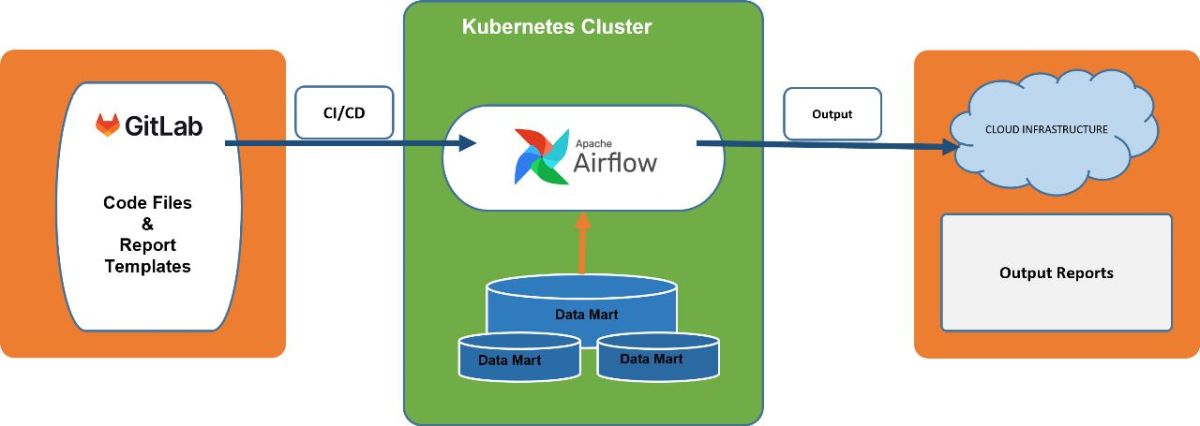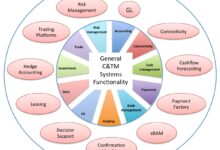Regulatory reporting automation software for investment banks managing MiFID II compliance: 7 Powerful Regulatory Reporting Automation Software Solutions for Investment Banks Managing MiFID II Compliance
Navigating MiFID II compliance doesn’t have to be a nightmare. With the right regulatory reporting automation software for investment banks managing MiFID II compliance, firms can turn complex obligations into streamlined, accurate, and efficient processes—saving time, reducing risk, and boosting confidence with regulators.
Understanding MiFID II and Its Reporting Demands

MiFID II (Markets in Financial Instruments Directive II) is one of the most comprehensive regulatory frameworks ever introduced in the European financial sector. Enforced since January 2018, it aims to increase transparency, protect investors, and enhance market integrity across EU member states. However, for investment banks, the directive has introduced a labyrinth of reporting obligations that are both technically complex and operationally demanding.
Core Reporting Obligations Under MiFID II
The directive mandates a wide range of reports, including transaction reporting, instrument reference data, position reporting, and transparency calculations. Each of these has specific data fields, timing requirements, and validation rules. For example, transaction reports must be submitted to national competent authorities (NCAs) within one working day (T+1) of execution, covering over 65 data fields per trade.
Transaction Reporting (TR): Captures details of every financial instrument trade.Reference Data Reporting: Includes LEI, ISIN, and other identifiers for instruments and counterparties.Position Reporting: Required for certain derivatives to monitor market abuse and concentration risks.Pre- and Post-Trade Transparency: Obligations to publish quotes and trade data before and after execution..
regulatory reporting automation software for investment banks managing MiFID II compliance – Regulatory reporting automation software for investment banks managing MiFID II compliance menjadi aspek penting yang dibahas di sini.
“MiFID II has fundamentally changed the data landscape for investment banks.The volume, velocity, and variety of required data mean that manual processes are no longer viable.” — Financial Conduct Authority (FCA), UK
Challenges Faced by Investment Banks
Many investment banks still rely on legacy systems, spreadsheets, and manual reconciliation to meet MiFID II requirements.This leads to high error rates, delayed submissions, and increased operational costs.A 2023 Deloitte report found that over 60% of financial institutions experienced at least one major reporting breach due to data inaccuracies or system failures..
- Data Silos: Disconnected systems make it difficult to aggregate and validate data.
- Complexity of Data Mapping: Mapping internal data fields to ESMA’s technical standards is error-prone.
- Regulatory Changes: Frequent updates to reporting templates and validation rules require constant adaptation.
- Penalties: Fines for non-compliance can reach millions of euros per incident.
Why Investment Banks Need Regulatory Reporting Automation Software
The complexity and scale of MiFID II reporting make automation not just beneficial—but essential. Regulatory reporting automation software for investment banks managing MiFID II compliance provides a centralized, scalable, and auditable solution that reduces manual intervention and ensures consistency.
Eliminating Manual Errors and Inefficiencies
Manual data entry and reconciliation are among the leading causes of reporting errors. Automation software eliminates these risks by pulling data directly from trading systems, normalizing it, and validating it against regulatory schemas before submission.
- Automated data extraction from OMS, EMS, and FIX feeds.
- Real-time validation against ESMA’s XML schemas and business rules.
- Automated error correction and alerting for exceptions.
Ensuring Timely and Accurate Submissions
With T+1 reporting deadlines, timing is critical. Regulatory reporting automation software for investment banks managing MiFID II compliance ensures that reports are generated, validated, and submitted on time—every time.
regulatory reporting automation software for investment banks managing MiFID II compliance – Regulatory reporting automation software for investment banks managing MiFID II compliance menjadi aspek penting yang dibahas di sini.
- Scheduled reporting workflows with built-in deadlines.
- Integration with trade repositories and national competent authorities.
- Automated retry mechanisms for failed submissions.
Key Features of Effective Regulatory Reporting Automation Software
Not all automation solutions are created equal. The most effective regulatory reporting automation software for investment banks managing MiFID II compliance offers a robust set of features designed to handle the full lifecycle of regulatory reporting.
End-to-End Data Integration
The software must seamlessly integrate with a bank’s existing infrastructure, including trading platforms, risk systems, and data warehouses. APIs and pre-built connectors are essential for minimizing implementation time and ensuring data consistency.
- Support for FIX, SWIFT, and proprietary messaging formats.
- Cloud-based and on-premise deployment options.
- Real-time data synchronization across systems.
Advanced Data Validation and Quality Checks
High-quality data is the foundation of compliant reporting. The software should include multi-layered validation rules, including format checks, cross-field validations, and business logic rules defined by ESMA.
- Pre-submission validation against ESMA’s latest technical standards.
- Automated LEI and ISIN lookups to ensure accuracy.
- Data lineage and audit trails for regulatory inspections.
Regulatory Change Management
MiFID II is not static. Regulatory bodies frequently update reporting requirements, such as the introduction of double volume cap calculations or changes to position reporting thresholds. The best automation software includes built-in change management tools.
regulatory reporting automation software for investment banks managing MiFID II compliance – Regulatory reporting automation software for investment banks managing MiFID II compliance menjadi aspek penting yang dibahas di sini.
- Automated updates to reporting templates and validation rules.
- Change impact analysis and version control.
- Notifications and alerts for upcoming regulatory deadlines.
Top 7 Regulatory Reporting Automation Software Solutions
Choosing the right platform is critical. Below are seven of the most powerful and widely adopted regulatory reporting automation software solutions for investment banks managing MiFID II compliance.
1. AxiomSL ControllerView
AxiomSL’s ControllerView is a leading platform used by major global banks for regulatory reporting. It offers a comprehensive suite of tools for MiFID II, EMIR, and other global regulations.
- Single platform for multiple regulations.
- Highly customizable data models and workflows.
- Strong support for data governance and auditability.
Learn more at AxiomSL.com.
2. Finastra Regulatory Reporting Solution
Finastra’s solution is designed for mid-to-large investment banks seeking an integrated approach to compliance. It supports real-time reporting and integrates with Finastra’s broader financial services ecosystem.
regulatory reporting automation software for investment banks managing MiFID II compliance – Regulatory reporting automation software for investment banks managing MiFID II compliance menjadi aspek penting yang dibahas di sini.
- Cloud-native architecture for scalability.
- Pre-built MiFID II reporting templates.
- AI-driven anomaly detection.
Explore at Finastra.com.
3. Broadridge Regulatory Solutions
Broadridge offers a managed service model, making it ideal for banks that prefer outsourcing compliance. Their platform handles everything from data aggregation to submission.
- End-to-end managed reporting service.
- Global coverage for MiFID II, Dodd-Frank, and ASIC.
- Dedicated client support and regulatory expertise.
Visit Broadridge.com for details.
4. SmartStream TLM® Regulatory Reporting
SmartStream’s TLM platform is known for its accuracy and reliability. It provides automated reconciliation and reporting for MiFID II, EMIR, and SFTR.
regulatory reporting automation software for investment banks managing MiFID II compliance – Regulatory reporting automation software for investment banks managing MiFID II compliance menjadi aspek penting yang dibahas di sini.
- Automated data matching and exception management.
- Real-time dashboards and reporting analytics.
- Support for both in-house and outsourced models.
More at SmartStream.tv.
5. Thomson Reuters Regulatory Reporting (formerly Regulatory Compliance Services)
Thomson Reuters offers a hybrid solution combining software and data services. Their platform leverages high-quality reference data to improve reporting accuracy.
- Integrated access to Refinitiv’s global instrument database.
- Automated LEI and ISIN validation.
- Regulatory change alerts and updates.
Check out ThomsonReuters.com.
6. SS&C RegReporter
SS&C’s RegReporter is a cloud-based solution tailored for asset managers and investment banks. It supports MiFID II, AIFMD, and other EU regulations.
regulatory reporting automation software for investment banks managing MiFID II compliance – Regulatory reporting automation software for investment banks managing MiFID II compliance menjadi aspek penting yang dibahas di sini.
- Scalable SaaS platform with rapid deployment.
- Automated data enrichment and validation.
- Comprehensive audit and compliance reporting.
Learn more at SSCTech.com.
7. Wolters Kluwer Enablon RegScan
While traditionally known for GRC, Wolters Kluwer has expanded into regulatory reporting with a focus on compliance intelligence and risk management.
- Regulatory change tracking and impact analysis.
- Integration with internal policy management systems.
- AI-powered content analysis for new rules.
Visit WoltersKluwer.com.
Implementation Strategies for Regulatory Reporting Automation
Deploying regulatory reporting automation software for investment banks managing MiFID II compliance requires careful planning and execution. A poorly implemented system can lead to data gaps, integration issues, and compliance failures.
regulatory reporting automation software for investment banks managing MiFID II compliance – Regulatory reporting automation software for investment banks managing MiFID II compliance menjadi aspek penting yang dibahas di sini.
Assessing Current Reporting Capabilities
Before selecting a vendor, banks must conduct a thorough assessment of their current data infrastructure, reporting workflows, and compliance gaps. This includes mapping data sources, identifying manual touchpoints, and evaluating data quality.
- Conduct a data inventory and lineage analysis.
- Identify pain points in current reporting processes.
- Engage stakeholders from trading, compliance, and IT.
Choosing Between In-House, Outsourced, or Hybrid Models
Banks must decide whether to manage reporting internally, outsource it to a third party, or adopt a hybrid approach. Each has trade-offs in cost, control, and scalability.
- In-house: Greater control but higher IT burden.
- Outsourced: Reduced operational load but less visibility.
- Hybrid: Balance of control and efficiency.
Change Management and User Training
Successful implementation depends on user adoption. Training programs, clear documentation, and ongoing support are critical to ensure that compliance teams, traders, and IT staff understand how to use the new system effectively.
- Develop role-based training modules.
- Create user guides and FAQs.
- Establish a helpdesk or support team.
Benefits of Regulatory Reporting Automation Beyond Compliance
While the primary goal is MiFID II compliance, the benefits of regulatory reporting automation software for investment banks managing MiFID II compliance extend far beyond avoiding fines.
regulatory reporting automation software for investment banks managing MiFID II compliance – Regulatory reporting automation software for investment banks managing MiFID II compliance menjadi aspek penting yang dibahas di sini.
Improved Data Governance and Transparency
Automation forces banks to standardize and centralize their data, leading to better data governance. This improves not only regulatory reporting but also internal risk management, analytics, and decision-making.
- Single source of truth for trade and reference data.
- Enhanced data lineage and auditability.
- Better alignment with GDPR and other data regulations.
Cost Savings and Operational Efficiency
Automating repetitive tasks reduces the need for manual labor, lowers error correction costs, and frees up compliance staff for higher-value work. A 2022 McKinsey study found that banks using automation reduced their regulatory reporting costs by 30–50%.
- Reduced headcount in compliance operations.
- Fewer fines and remediation costs.
- Lower IT maintenance costs over time.
Enhanced Strategic Decision-Making
With clean, reliable data and real-time reporting dashboards, banks can gain deeper insights into their trading activities, client behavior, and market exposure—enabling more informed strategic decisions.
- Real-time monitoring of trading volumes and positions.
- Analytics for market abuse detection.
- Better client reporting and transparency.
Future Trends in Regulatory Reporting Automation
The regulatory landscape is evolving rapidly, driven by digital transformation, increased scrutiny, and global coordination. Investment banks must stay ahead of these trends to remain compliant and competitive.
regulatory reporting automation software for investment banks managing MiFID II compliance – Regulatory reporting automation software for investment banks managing MiFID II compliance menjadi aspek penting yang dibahas di sini.
Rise of RegTech and AI-Powered Compliance
RegTech (regulatory technology) is transforming compliance through artificial intelligence, machine learning, and natural language processing. These technologies enable predictive analytics, automated rule interpretation, and intelligent anomaly detection.
- AI-driven validation and error prediction.
- NLP-based parsing of regulatory texts.
- Automated generation of regulatory updates.
Global Harmonization of Reporting Standards
While MiFID II is EU-specific, there is growing pressure for global standardization of reporting formats. Initiatives like the G20’s Legal Entity Identifier (LEI) and the ISO 20022 standard are paving the way for cross-border reporting harmonization.
- Adoption of ISO 20022 for regulatory messaging.
- Expansion of LEI usage beyond MiFID II.
- Interoperability between EU, US, and APAC reporting regimes.
Cloud and SaaS Dominance
Cloud-based regulatory reporting automation software for investment banks managing MiFID II compliance is becoming the norm. SaaS platforms offer faster deployment, lower upfront costs, and automatic updates—making them ideal for agile compliance.
- Scalable infrastructure for growing data volumes.
- Enhanced security and disaster recovery.
- Continuous integration with regulatory updates.
Case Study: How a Tier 1 Bank Achieved 100% MiFID II Compliance
One of Europe’s largest investment banks struggled with inconsistent MiFID II reporting, facing repeated warnings from the FCA. They implemented AxiomSL’s ControllerView platform to automate their reporting workflow.
regulatory reporting automation software for investment banks managing MiFID II compliance – Regulatory reporting automation software for investment banks managing MiFID II compliance menjadi aspek penting yang dibahas di sini.
Challenges Before Automation
The bank relied on spreadsheets and manual data entry across multiple departments. Data inconsistencies were common, and submission deadlines were frequently missed. Error rates exceeded 15%, leading to costly rework and regulatory scrutiny.
Solution and Implementation
The bank deployed AxiomSL’s platform with integration to their OMS, EMS, and data warehouse. The system automated data extraction, validation, and submission to the FCA and ESMA. A dedicated project team ensured smooth change management.
Results and Impact
Within six months, the bank achieved:
- 99.8% data accuracy in transaction reports.
- 100% on-time submissions.
- 40% reduction in compliance operational costs.
- Improved auditor and regulator confidence.
“The automation platform didn’t just fix our reporting—it transformed our entire compliance culture.” — Chief Compliance Officer, Global Investment Bank
What is regulatory reporting automation software?
regulatory reporting automation software for investment banks managing MiFID II compliance – Regulatory reporting automation software for investment banks managing MiFID II compliance menjadi aspek penting yang dibahas di sini.
Regulatory reporting automation software is a technology solution that automates the collection, validation, and submission of financial data to regulatory authorities. For investment banks, it is essential for meeting complex requirements like those under MiFID II, reducing errors, and ensuring timely compliance.
Why is MiFID II compliance so challenging for investment banks?
MiFID II requires detailed, accurate, and timely reporting across multiple data domains. The volume of data, strict deadlines (T+1), and frequent regulatory updates make manual processes error-prone and unsustainable, especially for large institutions with high trading volumes.
Can automation software handle other regulations besides MiFID II?
regulatory reporting automation software for investment banks managing MiFID II compliance – Regulatory reporting automation software for investment banks managing MiFID II compliance menjadi aspek penting yang dibahas di sini.
Yes, most advanced regulatory reporting automation software for investment banks managing MiFID II compliance also supports other regulations such as EMIR, SFTR, Dodd-Frank, and AIFMD. This multi-regulation capability makes them cost-effective and scalable for global banks.
Is cloud-based regulatory reporting secure?
Yes, reputable cloud-based solutions use enterprise-grade security, including encryption, multi-factor authentication, and compliance with standards like ISO 27001 and SOC 2. Many banks now prefer cloud solutions for their enhanced security and resilience.
How long does it take to implement a regulatory reporting automation system?
regulatory reporting automation software for investment banks managing MiFID II compliance – Regulatory reporting automation software for investment banks managing MiFID II compliance menjadi aspek penting yang dibahas di sini.
Implementation time varies based on complexity, but typically ranges from 3 to 9 months. Factors include data integration, customization needs, and change management. SaaS platforms often enable faster deployment than on-premise solutions.
Regulatory reporting automation software for investment banks managing MiFID II compliance is no longer a luxury—it’s a strategic imperative. As regulatory demands grow more complex and enforcement tighter, banks that invest in robust, scalable, and intelligent automation solutions will not only avoid penalties but also gain operational advantages, data clarity, and long-term resilience. From AxiomSL to Broadridge, the tools are available. The time to act is now.
Recommended for you 👇
Further Reading:



